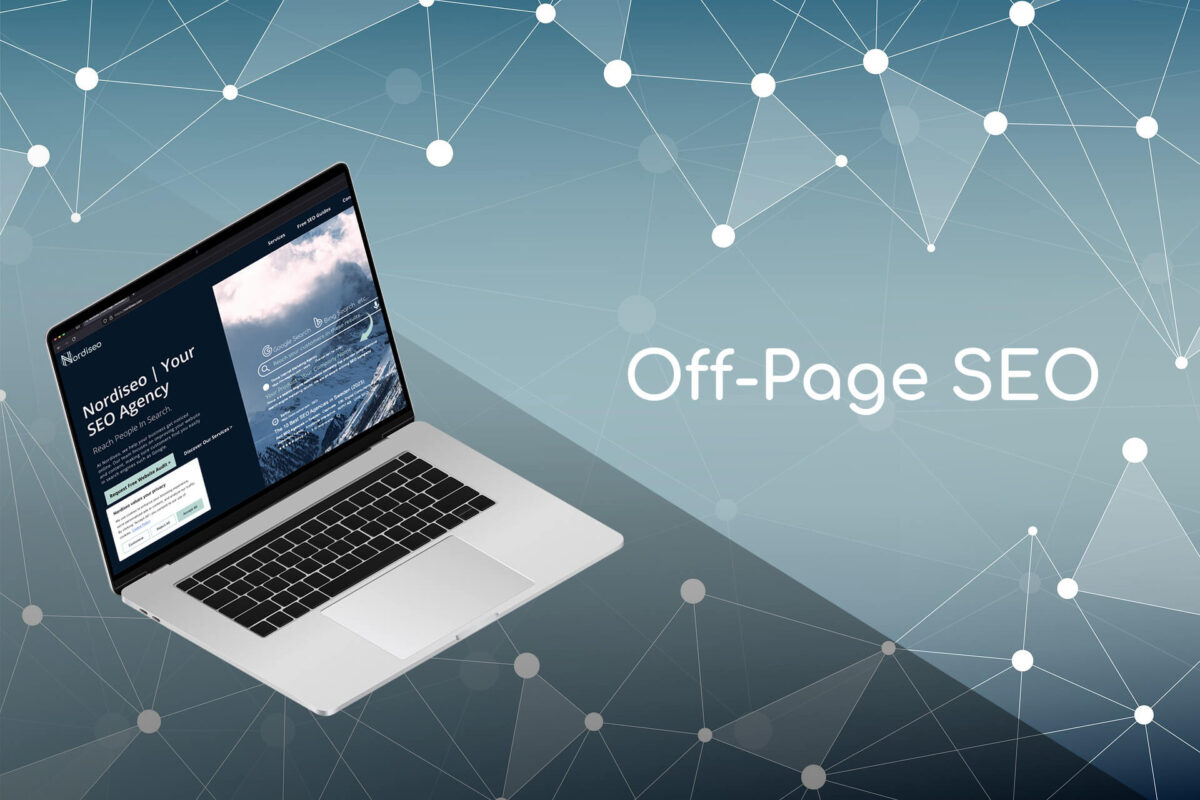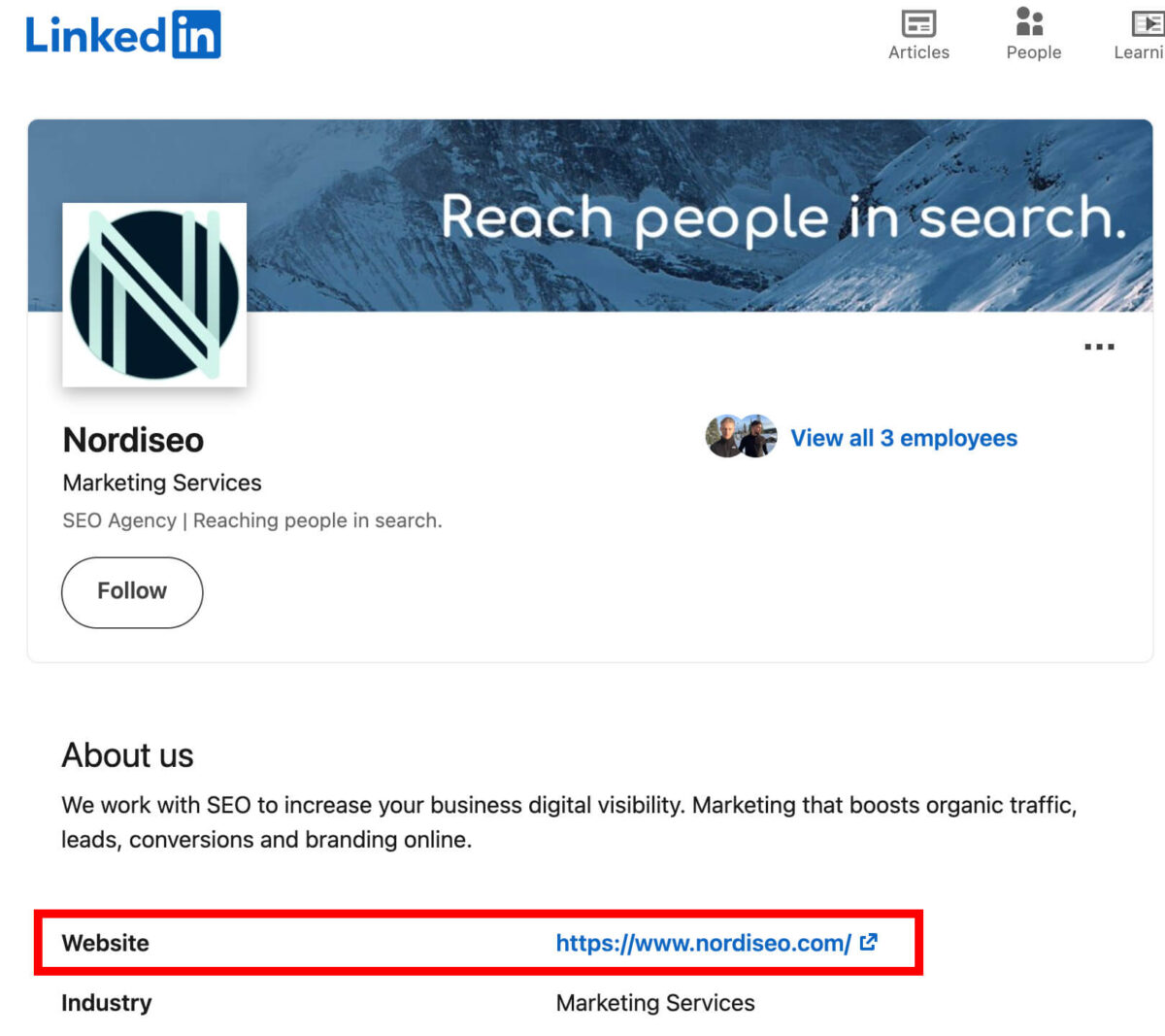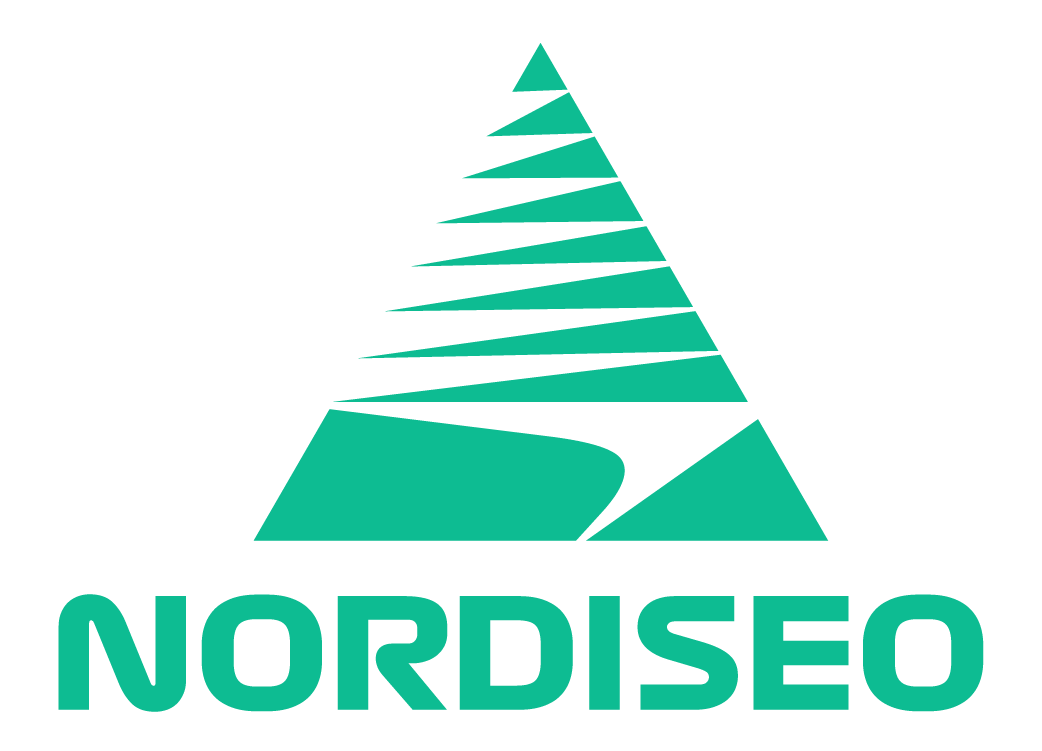Building a robust digital presence extends far beyond your website’s boundaries. We will give you 10 ways to improve this presence in this comprehensive Off-Page SEO Guide for 2024
With technology and algorithms constantly evolving, our guide provides you with the foresight and methodologies to ensure your off-page SEO strategies remain ahead of the curve. The landscape of digital marketing is competitive and intricate, but our forward-thinking approach, grounded in over seven years of experience, gives you access to cutting-edge practices that align with the latest industry standards.
Follow these tips to captivate search engines and appeal to your target audience, driving not just traffic, but the right traffic to your website. Here, we share the same innovative SEO strategies we use to fortify our client’s online footprints, leveraging everything from link authority to social signals – all for that excellent reach in search!
What is Off-Page SEO?
Off-Page SEO is activities performed outside of your website that influence your rankings within search engine results pages (SERPs). Contrary to on-page SEO, which deals with the elements on your site, like content and site structure, off-page SEO is all about the techniques that enhance your site’s perception by both users and search engines.
Arguably, the most significant off-page factor is the building and acquisition of backlinks. High-quality links from authoritative websites signal to search engines that your content is valuable, credible, and trustworthy. Many SEO-Specialists see Off-Page SEO and specifically backlinks as the most important factor for rankings.

Beyond link building, off-page SEO also embraces practices such as social media marketing, guest blogging, and influencer outreach. These methods contribute to establishing a brand’s authority and can indirectly lead to an improved search engine ranking by driving traffic and amplifying user engagement.
Effective off-page SEO is about creating a web of relationships and signals across the internet that back your site’s standing. This strategy not only aims to elevate your visibility in the SERPs but also fosters an aura of expertise and reliability.
Off-Page vs. On-Page SEO
There is a clear distinction but also a synergy between Off-Page and On-Page SEO. While on-page SEO covers the optimizations you can directly control within your own website, such as keyword-rich content and meta tags, off-page SEO extends into the broader digital ecosystem, revolving around your site’s authority as recognized by other internet entities.
To master the art of SEO, one must approach both strategies with equal importance and interlace them into a coherent plan. This dual-front approach begins with an on-page foundation, ensuring your website itself is optimized for both users and search engines.
Following this, off-page efforts can then be effectively employed, leveraging external factors like backlinks, social engagement, and other signals that are pivotal for search algorithms.
| Aspect | On-Page SEO | Off-Page SEO |
|---|---|---|
| Primary Focus | Content Relevancy & User Experience | Site Authority & Influence |
| Analogy | Laying a Solid Foundation (Building a House) | Boosting Curb Appeal (Enticing Visitors) |
| Key Elements | – Site Speed – Mobile Responsiveness – Keyword Optimization | – Authoritative Link Acquisition – Social Engagement |
| Impact on SERPs | Directly Affects How Content is Viewed & Ranked | Enhances Site’s Reputation & Authority for Higher Rankings |
By striking a balance, you can create a holistic SEO strategy that not only secures high SERP rankings but also drives meaningful, organic reach.
The on-page foundation for strong off-page SEO
A solid on-page SEO approach lays the groundwork for successful off-page SEO. This involves optimizing your website’s content, architecture, and user experience to ensure that your site is not only appealing to visitors but also to search engines.
On-page elements such as meta tags, headings, high-quality content, and optimized images provide clear signals about your page’s topic and relevance, which are critical for earning trust and authority in your field.
Consider your website the home base where any off-page strategies will point back to. Without a well-structured and content-rich home base, off-page efforts might fail to yield the desired impact. It’s much like building a network of roads, each backlink or social mention is a pathway leading back to your site which should be primed to engage and convert the resulting traffic.
1. Link building
Building a framework of high-quality backlinks is an undeniable driver for search engine success. Links form a vital channel through which search engines judge the worth, authority, and relevance of your website.
In 2024, link building continues to be about quality over quantity (in most cases). A single backlink from a prestigious and relevant domain can have a more striking effect on your SEO than numerous links from lesser-known sources.

And as high-quality backlinks are needed for businesses to be shown in SERP:s it has also gotten to the point that getting them for free is not impossible but requires a good amount of work. So a considerable budget for link building is practically unavoidable today if your goals are results in valuable search results.
Crafting excellent link-building strategies requires a blend of networking, content creation, and industry awareness. It’s about creating content so compelling that other sites are naturally incentivized to link to it. It’s also being savvy in identifying link opportunities that not only drive traffic but elevate your site’s stature in the complex tapestry of the web.
To think about when acquiring backlinks:
- Relevance – Ensure that the linking domain is relevant to your content.
- Authority – High domain authority sites pass more value.
- Anchor text – Use descriptive anchor texts when possible, make them align with your targeted key phrases.
- Diversity – A variety of sources and types of backlings enriches your backlink profile.
- Research – Use SEO tools to investigate competitors’ backlinks.
- Relevance – Target domains that align with your content’s theme.
- Genuine Outreach – Forge real relationships rather than transactional link exchanges.
Identifying and securing high-quality backlinks
Identifying prime backlink opportunities stems from meticulous research and the development of meaningful connections within your industry.
One begins by analyzing competitor backlink profiles to understand where they garner their authority. Tools like Ahrefs, SEMrush, or Moz can be instrumental in this detective work, providing insights into successful backlink sources.
Engaging with relevant, authoritative blogs and websites for guest posting opportunities is another avenue. The confluence of trust, domain relevance, and contextual anchor text is vital for a backlink to truly resonate in terms of SEO impact.
Thus, personalized outreach and providing genuine value should underscore all engagement efforts. This dedication to excellence and strategic alliance forms the bedrock for a substantial and influential backlink profile.
Measuring the impact of backlink authority on rankings
The influence of backlink authority on search rankings cannot be overstated, functioning as a strong signal of trust and quality in the eyes of search engines. To gauge this impact, consider not just the quantity but the esteem of your backlinks.
Authoritative backlinks serve as powerful endorsements, capable of boosting your website up the SERP ladder. Incorporate tools like Majestic’s Trust Flow and Ahrefs’ Domain Rating for a quantitative look at your backlinks’ potency.
But beyond these metrics, observe changes in your organic search positions as these high-caliber links are earned. A direct correlation between new authoritative backlinks and improved rankings underscores their importance.
Tip: It’s not just about numbers; the context and reputation of linking domains play a significant role in the SEO value passed to your site.
Rasmus Isak Kernen – Nordiseo
2. Diverse and organic link profiles
Building a diverse and organic link profile is a fundamental aspect of a successful off-page SEO strategy. Rather than solely focusing on acquiring any backlinks, aim for a tapestry of links that showcases a natural growth pattern.
Involve various types of content: A mix of infographics, videos, long-form articles, and studies. All to appeal to different content curators. Collaborate on content with other businesses or contribute to industry roundups, which can generate links from new and relevant sources.
Remember, search engines value a link profile that appears to have grown organically as a result of genuine interest and recognition from others in the space.
Variety is key in this creative approach. Hosting webinars or creating podcasts can intrigue a broader audience and result in links from platforms that might otherwise remain untapped. Engaging with community discussions and forums, answering questions, and being present in relevant online spaces not only establishes your authority but can also organically introduce backlink opportunities.
Suggestions to diversify link profile:
- Multimedia Content – Include formats like podcasts and webinars to attract links from varied sources.
- Interactive Elements – Add calculators, quizzes, or other interactive tools to encourage users to share and link to your content.
- Community Engagement – Position yourself as a thought leader within forums and niche communities.
3. Content Marketing
Content marketing forms the backbone of a dynamic off-page SEO strategy. It’s in the creation and circulation of high-quality, engaging content that a brand truly amplifies its voice beyond the confines of its own site.
At the core, content must be intrinsically valuable, prompting users to share and reference it across various platforms. When content resonates well with your audience, it can generate organic backlinks, social mentions, and enhance overall brand awareness.
This synergy between providing valuable insights and engaging storytelling ensures that your content spreads like wildfire across the digital landscape, laying down multiple paths that lead straight back to your website.
Think about this when crafting content for marketing:
- Valuable and Relevant Content: Ensure each piece of content provides value to your target audience.
- Shareability: Craft content with the potential to go viral, encouraging shares and backlinks.
- Engaging Storytelling: Use narratives to connect with readers and make your message memorable.
Leveraging Expertise to Craft Engaging, Share-Worthy Content
Creating content that stands out in the vast sea of digital information becomes essential for off-page SEO success. The quality of content directly impacts its shareability and the organically earned backlinks that follow.
As we steer through 2024, the focus intensifies on leveraging expertise to produce compelling, accurate, and in-depth content that audiences find irresistible enough to share.
This expertise-driven approach not only satisfies the audience’s thirst for knowledge but also bolsters the content’s credibility and amplifies its potential to become a reference point within the industry, attracting high-quality backlinks and fostering relationships with influencers and authority figures.
- Deep Dive: Offer thorough insights into topics to position your content as authoritative.
- Expert Opinions: Include quotes and insights from industry experts to add credibility.
- User Engagement: Encourage audience interaction through questions and calls-to-action.
4. The role of influencers in off-page content distribution
In the digital marketing orbit, influencers wield substantial power to amplify a brand’s message. By collaborating with influencers, companies can leverage their established audiences and credibility, resulting in enhanced content dissemination and off-page SEO potency.
Influencers often have loyal followers who trust their recommendations, which means that when they share your content, it is received with a degree of pre-validated trust. Moreover, influencers can facilitate diverse backlinks from their own platforms and social channels, diversify your content’s reach, and introduce your brand to potential customers in an organic and relatable way.
Pros with influencer marketing:
- Trust and Credibility: Influencers can transfer their own authority to your brand.
- Audience Reach: Gain access to new and relevant audiences through the influencer’s network.
- Quality Backlinks: Drive high-quality traffic with backlinks from influencer platforms.
5. Synergizing PR and Content
The marriage of public relations (PR) and content strategy unfolds a realm of untapped potential for off-page SEO. Engaging narratives that resonate with your brand’s vision, when echoed through the right PR channels, not only captivate your audience but also attract substantial media attention.
This exposure results in authoritative backlinks and enhanced visibility, propelling your content’s reach to an audience beyond the conventional scope.
Pro tip: Align your content’s narrative with current trends and topics of public interest to amplify its PR potential and off-page impact.
Rasmus Isak Kernen – Nordiseo
- Storytelling Alignment: Synchronize your content with current events to boost relevance and PR appeal.
- Media Outreach: Target well-aligned media outlets for collaborations and coverage of your content.
- Brand Message Consistency: Keep a consistent brand message across PR campaigns to strengthen brand identity.
6. Social Signals
Despite the ongoing debate regarding the direct impact of social signals on rankings, one can’t ignore their role in enhancing off-page SEO. When content is liked, shared, or commented on social media, it boosts visibility and draws attention, which can lead to increased website traffic and potentially more backlinks—both of which are essential for SEO.
A well-crafted social media strategy ensures continuous engagement with your audience, keeping your brand top of mind and your content in circulation. This indirect boost to your SEO efforts helps establish your site as a hub of activity and relevance.
If you do not have time for a more advanced social media strategy, then the least we recommend is to set up your social media profiles with your company name and link back to your site for a no-follow link and some visibility if there is a search for your brand on social media platform. A little bit of work for some good gains.

Pros with social signals:
- Increase Brand Visibility: More eyes on content can equal more organic traffic.
- User Engagement: Interaction with content can aid in building brand reputation and authority.
- Content Circulation: Sharing extends the reach and lifespan of your content beyond initial publication.
Navigating Social Media to Bolster Off-Page Authority
In the grand scheme of off-page SEO, social media platforms stand as pivotal battlegrounds for brands to exert their influence and grow their authority.
While direct SEO benefits might be nebulous, the indirect impact of social media can be substantive. It lies in the ability to navigate these platforms strategically, crafting content that resonates with users and sparks meaningful engagement. This content then becomes a beacon, guiding traffic back to your website, increasing exposure, and often generating secondary backlinks as your reach expands.
A well-orchestrated social media presence, therefore, becomes a cornerstone of off-page SEO, building the kind of buzz that search engines can’t help but notice. Investing in a strong social media strategy is vital to the off-page success Nordiseo advocates for sustained brand growth.
Remember: Authentic engagement on social media can create ripples that expand your brand’s online presence, even if those ripples don’t directly correlate with SERP rankings.
Keep this in mind for social media posts:
- Consistency: Regular posting schedules keep audiences engaged and informed.
- Responsiveness: Interacting with comments and messages builds community and demonstrates active involvement.
- Tailored Content: Content calibrated for the specifics of each platform maximizes engagement and outreach.
Harnessing user engagement for off-page success
User engagement serves as a catalyst for off-page SEO success. Engaging your audience is about creating an interactive experience that compels them to participate, share, and discuss your content. It’s the virtual equivalent of word-of-mouth marketing. When users comment, like, or share, they’re giving a thumbs-up to your brand in the most public of forums.
Encourage such interactions by asking questions, running contests, or simply sparking conversations on social media platforms. Remember, each interaction can lead to augmented visibility and backlinks as satisfied customers bring in their networks, which inadvertently augments your SEO efforts.
Create user engagement with:
- Questions: Prompt discussions with thought-provoking inquiries.
- Contests: Drive engagement with exciting challenges that incentivize participation.
- Conversations: Initiate dialogue to keep your community buzzing about your brand.
7. Local SEO and Off-Page Techniques
Local SEO is a crucial component of a strong off-page SEO strategy. It focuses on optimizing your online presence to attract more business from relevant local searches. These searches take place on Google and other search engines, which use different ranking factors for local queries, such as proximity, relevance, and prominence.

A well-managed Google Business Profile, accurate local citations across directories, and structured location-based content significantly boost local visibility.
By employing these tactics, businesses can enhance their discoverability by local customers, drive foot traffic, and gain an edge in specific geographical markets.
Include this in your strategy for local SEO:
- Google Business Profile: Regular updates and accurate information support local search rankings.
- Local Citations: Consistency in name, address, and phone number (NAP) across directories improves SERP placement.
- Localized Content: Provides relevance to local audience searches and queries.
8. Google Business Profile Management
Managing your Google Business Profile (GBP) with expertise is not just about being found; it’s about being chosen. You can easily follow the steps to set up a google business profile here.

A robust GBP acts as a beacon to potential customers, signaling your local presence and trustworthiness. Most importantly, it provides a snapshot of your business, allowing you to highlight what sets you apart. A critical aspect of GBP management is ensuring that your business information is accurate and comprehensive.
This includes updating hours, services, and images, which can all influence a customer’s decision to engage with your business.
Additionally, responding to reviews, whether positive or negative, shows a commitment to customer service and can improve your business’s appeal to both search engines and locals.
Be sure you have:
- Complete Information – A fully filled out profile ensures customers have all the information they need at a glance.
- Active Engagement – Prompt responses to reviews and questions reflect your dedication to customer satisfaction.
- Regular Updates – Keep your audience informed about the latest offers, events, and updates.
9. NAP citations across the web
Increase the consistency of your business’s Name, Address, and Phone number (NAP) across the web to fortify the credibility and discoverability in search results. Search engines draw from a variety of sources to build a profile for your business.
Discrepancies in your NAP information on directories, social platforms, and review sites can muddy your business’s digital footprint, leading to confusion for both customers and search algorithms. Regular audits of your NAP citations are foundational, ensuring that any listing on the web is consistent with the accurate. Up-to-date data reflected on your Google Business Profile and your website, thereby optimizing your off-page SEO performance.
Remember: Consistent NAP data across online platforms is a signal of reliability to search engines and fosters user trust, making it a cornerstone of off-page SEO.
10. Online reviews
Online reviews hold immense power in shaping a brand’s reputation and significantly influencing off-page SEO. They act as genuine user-generated content that search engines value for the firsthand experience they relay about a business.

By encouraging customers to leave feedback, you not only gain valuable insights into your service quality but also foster fresh content that keeps your digital presence vibrant and current. Handling reviews with professionalism, responding duly, and resolving concerns demonstrates your commitment to customer satisfaction, building trust and encouraging loyalty.
Notably, reviews imbued with relevant keywords can further boost your SEO, providing that the language remains natural and true to the customer’s voice. An active review management strategy is pivotal to leveraging user feedback for sustainable off-page optimization and growth.
Get reviews with these tips:
- Encourage Customer Feedback: Open channels for reviews on multiple platforms.
- Professional Response: Address both praise and critique constructively.
- Review Optimization: Beneficial use of keywords to support off-page SEO without compromising authenticity.
Cultivating a review strategy that supports E-E-A-T principles
Advancing off-page SEO efforts, customer reviews play a potent role, not least through embodying the E-E-A-T (Experience, Expertise, Authoritativeness, and Trustworthiness) principles. Reviews can augment your credibility by providing authentic user experiences that showcase your brand’s expertise and trustworthiness.
A well-curated review strategy entails encouraging feedback across varied platforms, responding insightfully to customer insights, and showcasing these testimonials prominently. This not only fortifies customer trust but also informs search engines of your brand’s reliability and service quality.
Implementing a structured methodology to solicit, manage, and ethically leverage reviews constitutes a compelling component of off-page SEO that both prospective customers and search engines view favorably.
Off-page SEO monitoring
Lastly, monitoring your brand’s online footprint is essential in understanding the reach and impact of your off-page SEO activities. Regularly tracking backlinks, brand mentions, and social signals offers insights into how your brand is perceived in the digital space.
By using tools like Google Alerts, Ahrefs, or Mention, you can stay informed about where and how your company is discussed online, allowing you to swiftly address any issues and capitalize on opportunities.
So keep track of:
- Backlink Tracking: Observe the quality and quantity of incoming links.
- Brand Mentions: Gauge public sentiment and respond to feedback.
- Social Engagement: Measure the impact of your social media presence.
This vigilance ensures that your off-page SEO efforts are delivering the expected results and contributing positively to your brand’s growth and reputation.



